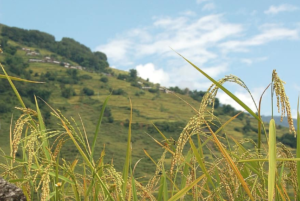Clouds Used to Generate Water in Nepal

Margot Krasojevic Architecture will be responsible for a device that has the capability of extracting water in Nepal from clouds and store it for later use. Importantly, due to humidity and a landscape that is copious with mountain ranges and hilltops — this region of Asia would benefit greatly from water irrigation. The clouds that naturally form in the region will allow for a maximum of 5,000 liters of water production per day. This water, in turn, will be held in a water reservoir.
Water Irrigation and Reservoirs
The majority of the potential 5,000 liters of excess water in Nepal will likely serve to water tea and other crops. About 70% of all freshwater that is taken from the source is used for growing crops. Notably, a negative aspect of relying on water irrigation to feed crops is that, compared with water for in-home use, only 50% of the water returns to a natural water source. The remaining 50% — farmers/workers lose through leaking pipes or evaporation from watered plants. This stands in stark contrast when looking at in-home (and business) water use — where 90% can return to natural water supplies through sinks and toilets.
The potential (daily) 5,000 liters of cloud water that would be used for irrigation will be held in a man-made lake, known as a reservoir. Reservoirs are used when there is not enough rain flow for water to naturally hydrate vegetation. The water stored in this advanced, cloud-water, irrigation system should have a protective covering and cleaning mechanisms inside of it, to protect water from evaporation and accumulated sediment buildup.
The Commissioning of Margot Krasojevic Architecture
Having a well-functioning, cloud-water irrigator with minimal evaporation and sediment buildup will benefit the 6.1% of Nepali citizens who live on less than $1.90 per day. The process to draft worthy architects for the project included informing architects of what was expected and then choosing between various concept designs. The concept design turns into more complex scale drawings and ends with a finished structure.
The finished structure used to obtain water in Nepal will include landscape-inspired contours and solar power. In that same vein, this architecture firm has a plethora of environmentally-friendly structures. The founding architect of Margot Krasojevic Architecture, Dr. Margot Krasojevic, believes that other builders should design based on social changes and environmental events of the past as well. Dr. Margot Krasojevic would also like to see the footprint of modern technology in building designs.
Dr. Krasojevic believes that architects should have guidelines for building projects. Project guidelines should incorporate proportions of materials that are renewable and not damaging to the environment. Also, Dr. Krasojevic believes that it would be wise for builders to aid in the preservation of the planet’s limited resources. She sees the potential in extra steps taken to mitigate environmental depredation and resource misuse.
Architects and Project Commissioners: A Joint Effort
As Nepal commissioned this architecture firm to build a sustainable structure, there may be changes/additions needed for the structure. Architects can work hand-in-hand with the commissioners of projects and take feedback and alter projects as necessary. As the leaders look to procure useful water in Nepal, the need for continued supplies of water and interplay between structure and environment may add more dimensional depth to the project. Nepal will positively benefit from this structure and its potential to increase water-security within the country.
– DeAndré Robinson
Photo: Pikist
